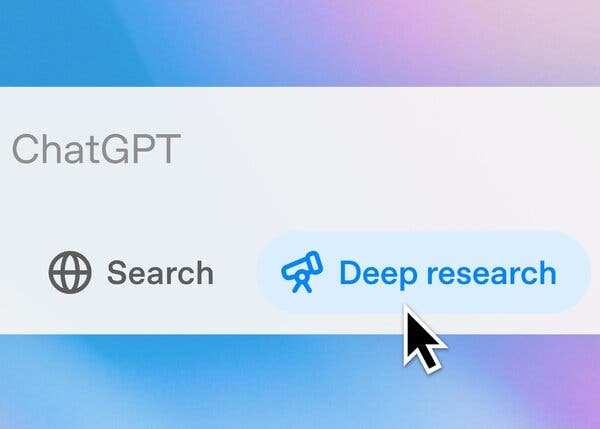Playing Different Games
OpenAI monetizes, Google commoditizes, and China strategizes in the AI race

At the beginning of the year, I was working on a project for a client. We needed to read documents and categorize them, but there was a catch—we didn't have the documents. We needed to find them first. The prevailing way to solve this with AI is to use an "agentic pattern." Instead of a linear workflow where humans find documents and feed them to AI, we give the AI tools to search the web, read web pages, and find the documents itself. This approach is supported by many frameworks and is quite common, but I figured it would take a few days to wire it up.
Then OpenAI released Deep Research on February 2nd. They'd connected their thinking model (O1) to search and web browsing—exactly what I needed. Sam Altman, CEO of OpenAI, knew that this was a valuable product. He said that Deep Research could now perform "a single-digit percentage of all economically valuable tasks in the world."
OpenAI included it in their $200/month pro plan, but behind the scenes they were pondering how they could charge much more for their products. After all, the economic value their products create is far more than $200 a month. According to reporting in The Information, OpenAI was discussing a $2,000 a month plan to let people access their advanced models and products. For my purposes, $200 was a steal, even though there was a limit of 120 research queries a month. The tool worked well, solving my document discovery and categorization problem in a fraction of the time it would have taken to build my own solution.
But unfortunately for OpenAI, their efforts to extract value for their product ran into the buzz saw of deflationary pressure that technology inevitably exerts.
Google released their own version of Deep Research first at $20 a month and then made it free for all users. Grok (from Elon Musk's x.ai) released their latest thinking model with research capabilities built in. And not to mention the many open source frameworks that made it even easier to build your own version of a research agent. OpenAI has now expanded the use of Deep Research to lower-cost plans, but it's hard to imagine it can continue as a paid feature given the plethora of good options in the market.
One reason for this incredible push to demonetization is captured in Peter Diamandis' 6D model of exponential growth. The model describes how technologies evolve: they become Digitized, then go through Deceptive growth, become Disruptive, and finally get Demonetized, Dematerialized, and Democratized. The key insight is that once something becomes digitized, it inevitably leads to demonetization—what was once expensive becomes cheap or free.
But there's another dynamic at work here, one that perfectly captures what's happening between OpenAI and Google. It reminds me of that iconic scene from "Raiders of the Lost Ark" where Harrison Ford's Indiana Jones confronts an intimidating swordsman. The swordsman (like OpenAI) shows off his elaborate skills, twirling his blade with impressive expertise. An unimpressed Indiana Jones (like Google) simply pulls out his gun and shoots him. Why engage in a complex battle when you have a simpler, more efficient solution? The two competitors are playing entirely different games with different incentives.
Commoditizing Your Complements
Back in 2002, Joel Spolsky, co-founder of Stack Overflow and Trello and influential software industry commentator, wrote his famous "Strategy Letter V," where he introduced a concept that explains what's happening in AI today: commoditizing your complements.
Spolsky explains that every product has substitutes (things you might buy instead) and complements (things you buy together with it). When the price of a complement goes down, demand for your product goes up. The classic example is hotels and flights: if you own a hotel in Austin and the price of flights to Austin drops, more people will visit the city, increasing demand for your rooms. Similarly, gas and cars are complements—cheaper gas means more people drive, increasing demand for cars. Chicken and beef, on the other hand, are substitutes—if beef prices rise, people buy more chicken instead.
His key insight: "Smart companies try to commoditize their products' complements." In other words, what can they make cheaper so they get more customers? Think of Square mailing out free card readers to businesses so they could sell them credit card processing. Or Google and Facebook investing in free or low-cost internet access in developing countries so they'd have more customers for their search and social media products. Netscape gave away their browser for free because they wanted to sell more web servers—browsers and servers being perfect complements.
This is exactly what's happening with AI research tools. Google doesn't need to make money directly from its AI research capabilities—it needs to protect its core search business. By making these tools free, Google ensures that they continue to organize the world's information and are not threatened by a better option. OpenAI, meanwhile, needs to monetize these features directly because they don't have Google's advertising revenue.
I suspect this will be the undoing of many of the startups building AI products. In software development, Cursor is building a great coding agent that they charge for, but Microsoft is giving away GitHub Copilot for free. Midjourney is a paid product, but Facebook is giving away image generation for free in its AI assistant.
The cycle is accelerating with each new capability. What used to take years to commoditize now takes months or even weeks. And as my experience with Deep Research shows, the timeline is compressing further. What was worth $200 in February 2024 became free by April.
The China Factor
While Western companies play this monetization chess match, China operates with an entirely different set of rules. Their national interest in becoming a global AI hub creates incentives that aren't tied to direct monetization.
DeepSeek offers a perfect example. In January 2025, this Chinese AI company unveiled its R1 model, a chatbot of comparable quality to OpenAI's O1 that surprised Western AI researchers. What's interesting is DeepSeek's origin story: it began not as an AI lab but as High-Flyer, a quantitative hedge fund using AI for stock trading. When Beijing cracked down on speculative investments in 2021, High-Flyer launched DeepSeek to align with government priorities, transforming into an AI research company.
The model and the underlying technology were released with liberal open source licensing—something unthinkable for Western AI labs, where such intellectual property forms the basis of monetizable products. By December 2023, DeepSeek had been designated a "national high-tech enterprise" by Chinese authorities, granting it preferential tax treatment, government subsidies, and research grants.
Just three days after the R1 release, the Bank of China unveiled their AI Industry Development Action Plan, committing to invest 1 trillion yuan ($137 billion) to strengthen their AI supply chain and achieve "self-reliance in science and technology." Provincial governments have introduced computing vouchers to help AI startups offset cloud computing costs, with at least 17 provinces pledging to distribute vouchers worth up to $300,000 per company.
This creates a different competitive dynamic. Even as Google gives away Deep Research for free, it's still tied to the Google ecosystem and ultimately serves Google's business model. Chinese companies, backed by different capital structures and aligned with state interests in advancing AI capabilities, can focus on the technology itself without the same pressure for direct returns.
The result is a multi-speed race where different players operate with different incentives. It's as though just as Indiana Jones (Google) dispatches the skilled swordsman (OpenAI) with his pragmatic gun, he turns around to find himself facing a new challenger—one holding a bazooka.
Related:





